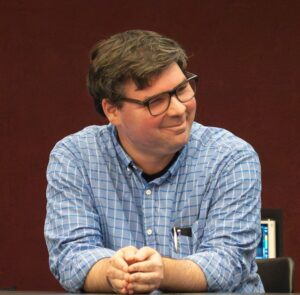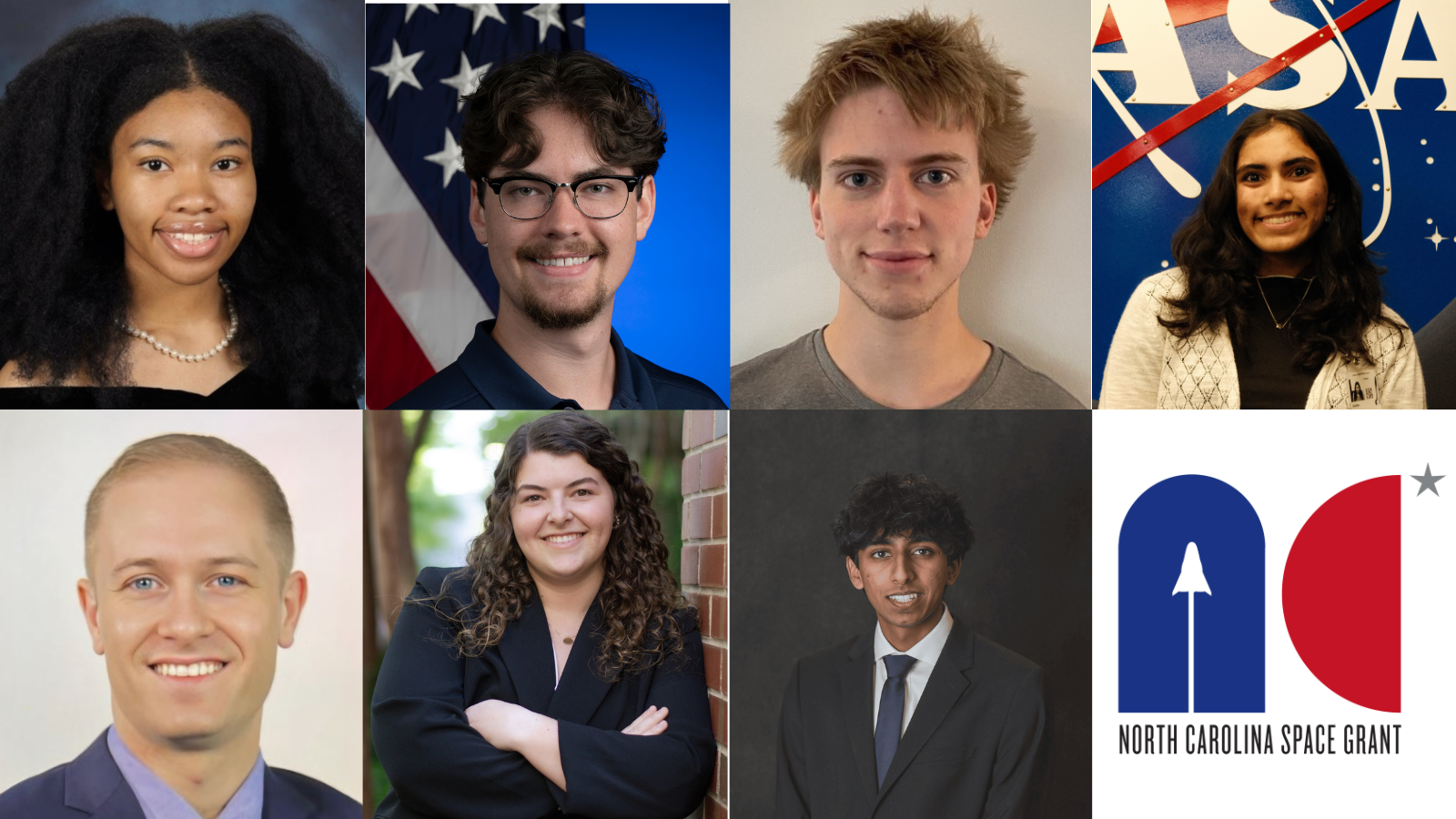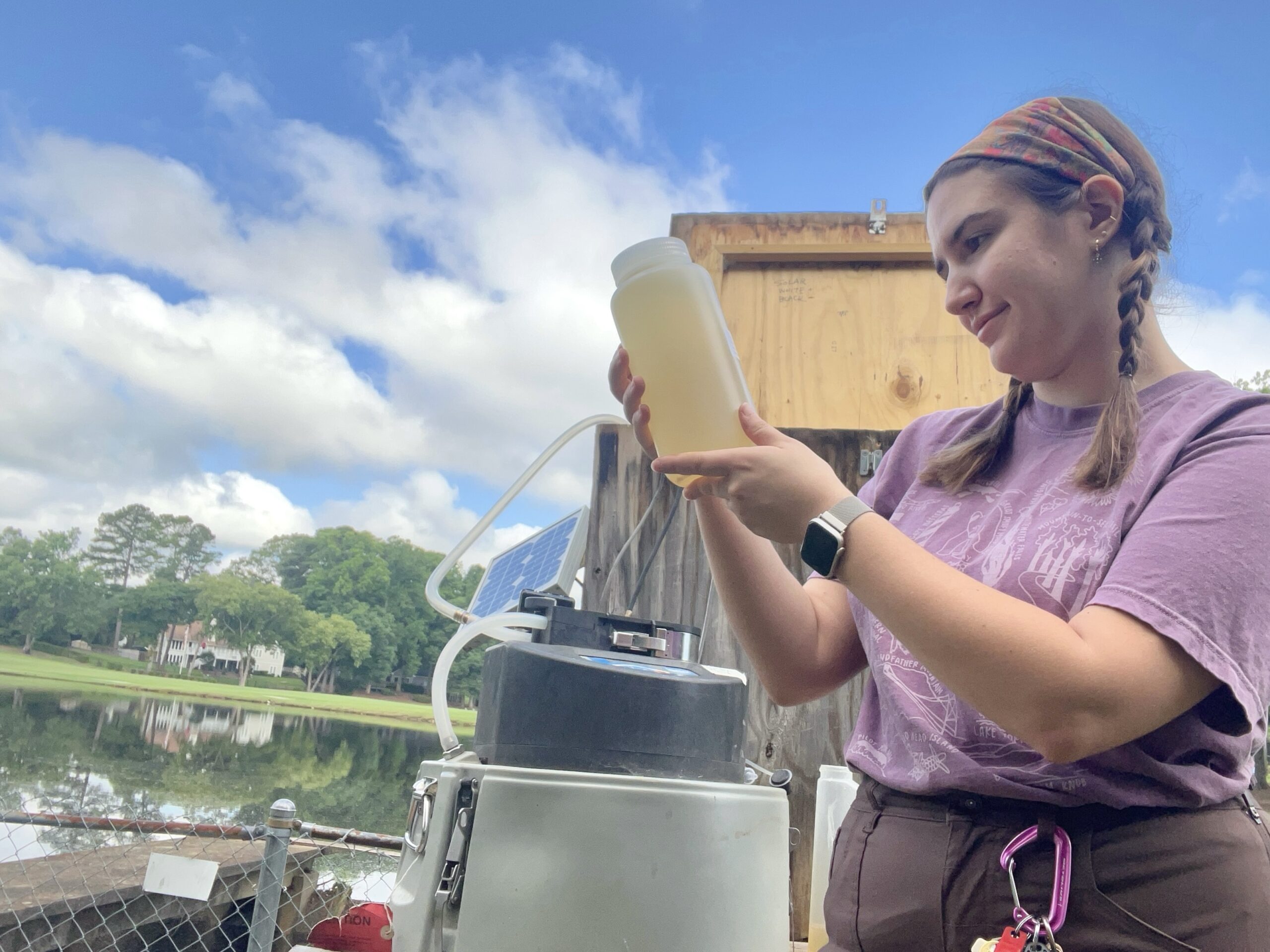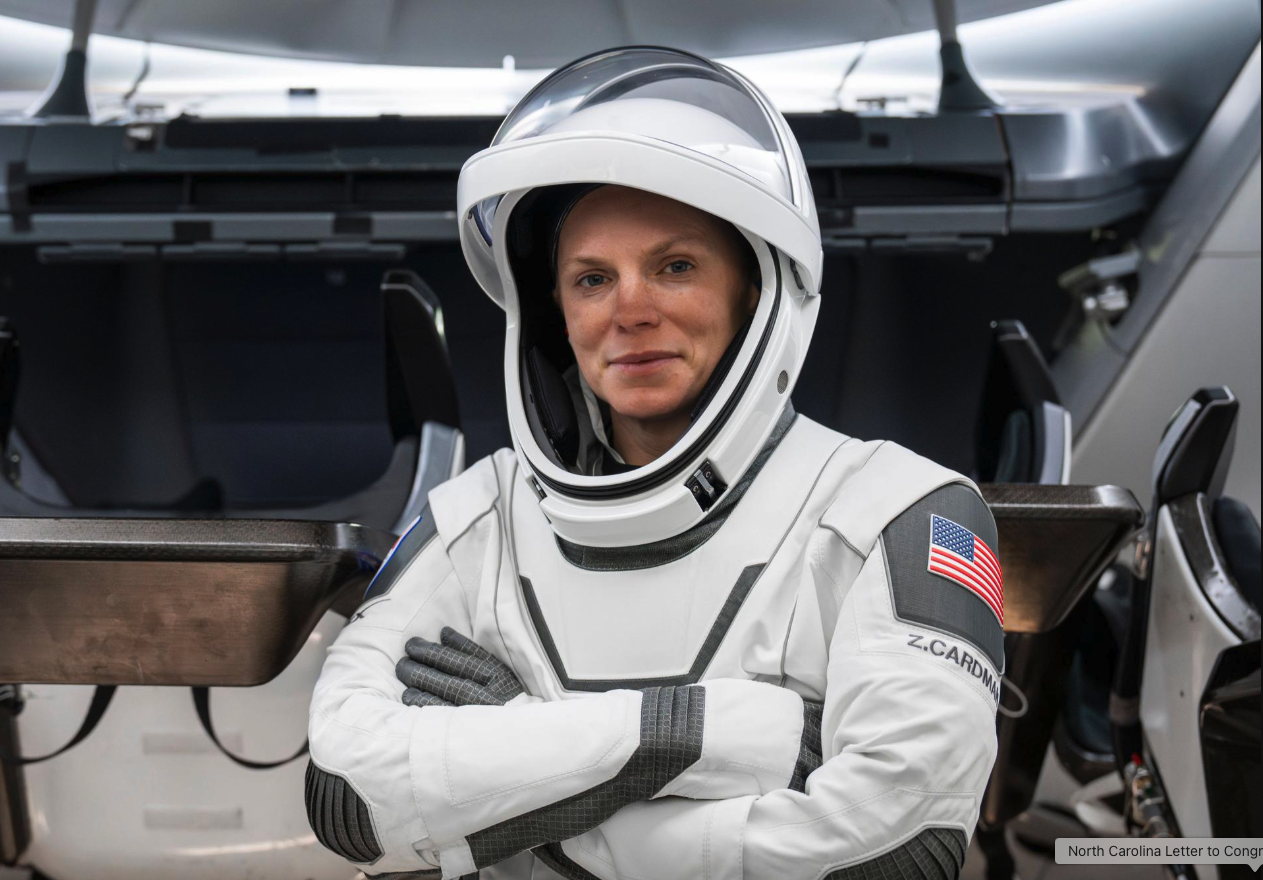NC Space Grant Announces 2025-2026 Faculty Research Recipients

North Carolina Space Grant is pleased to announce the recipients of the 2025-2026 Faculty Research Grants. The selected faculty members will make research contributions in engineering, atmospheric science, astrobotany, and composite manufacturing.
“NC Space Grant was excited to see such a diverse range of research topics and institutions selected for this award this cycle. We look forward to following how the students supported under these awards will benefit from the hands-on experiential learning provided under the direction of their faculty mentors to better prepare them for future workforce or academic opportunities,” said Sandy Canfield, assistant director of NC Space Grant.
NC Space Grant created the Faculty Research Engagement Grant to provide support for faculty research that engages students in the work. This award is aimed at both emerging and established researchers whose work is aligned to one or more of the National Aeronautics and Space Administration’s (NASA) Mission Directorates.
Faculty selected for awards have demonstrated strong scientific and technical merit that aligns to one or more NASA Mission Directorate, as well as meaningfully engage undergraduate and/or graduate students in faculty-led research endeavors.
NC Space Grant’s 2024-2025 Faculty Research Grant Recipients

Andrew Lee, Andrew Lee, Assistant Professor, Department of Mechanical and Aerospace Engineering, NC State University
Scalable Ultralight Space Structures with Cable-stayed Systems
Cable-stayed deployable space structures allow effective loading to be distributed among multiple structural members through interconnected tensioned cables. The dramatic increase in overall stiffness allows for considerable mass reduction over state-of-the-art spacecraft structural designs that primarily utilize planar load-bearing elements, such as solar sails and flexible blanket solar arrays. A successful implementation of cable-stayed systems, including efficient packaging and deployment schemes, will help address scalability challenges for space structures as future missions will require larger deployed sizes. A key aspect to consider is the effective interplay between cables and membranes loaded in tension and booms loaded in compression and bending. By leveraging these coupled interactions and simultaneously optimizing the concept selection, topology, and member sizing, significant advances will be made for the mass efficiency, dimensional stability, and scalability of large space structures. A combination of finite element analysis, analytical, and semi-analytical methods will be used to optimize the cable-stayed structures for metrics including the areal density, vibration and buckling modes, and shape accuracy. Reduced-scale prototypes will then be manufactured and tested for model validation and the development of packaging and deployment methods.
Dr. Lee will engage with NC State University graduate and undergraduate students through hands-on research experiences and promote their development as the next generation of engineers. The project will provide both educational and research opportunities in spacecraft design, structural mechanics, composite materials, manufacturing, and experimentation. Involved students will conduct analytical modeling, finite element simulations, composites and prototype manufacturing, deployment and vibrations experiments, and data analysis by closely working with Dr. Lee.
______________________________________

James Sherman, Professor, Department of Physics and Astronomy, Appalachian State University
Advancing the AppalAIR Observatory at Appalachian State University into a World Class Community Facility for Climate Research, Student Research Training, and Public Outreach
The project objectives focus on maximizing the scientific and research training capabilities of the world-class atmospheric aerosol instrumentation and datasets at Appalachian State University’s Appalachian Atmospheric Interdisciplinary Research Facility (AppalAIR). This will be achieved by:
- maximizing the usage of the AppalAIR data products for student research, classroom-based studies, and multi-disciplinary research collaborations by (a) developing an integrated web-accessible database and user’s guides; and (b) developing PYTHON (or MATLAB) scripts for database access, data integration, analysis, and visualization,
- increasing accessibility of the aerosol sampling infrastructure and instruments to student researchers and collaborators, through hardware modifications and developing standard operating procedures, and
- increasing awareness of the AppalAIR aerosol observatories and their scientific importance to potential collaborators and the public, through community outreach, publications, conference presentations, and website upgrades.
The proposed project leverages recently integrated aerosol and cloud instrumentation at AppalAIR, initiation of process-driven studies of aerosol-cloud-chemistry interactions, and initial collaborations between APP and Georgia Tech. Collaborations formed from these activities will significantly enhance external funding opportunities for APP, as a primarily undergraduate university. Results will be leveraged in an NSF-Lower Tropospheric Facilities grant for long-term sustainability and expansion of the collaborative research and research training at the AppalAIR facilities. Graduate and undergraduate researchers will be engaged in this project to (1) develop the database; (2) assist in writing and testing scripts in MATLAB or PYTHON to process and visualize aerosol/cloud data products; (3) assist in aerosol hardware modifications to increase student participation in the measurements, instrument maintenance, and calibrations; (4) develop standard operating procedures for instrument maintenance, calibrations, and database access; and (5) present research at conferences and assist Dr. Sherman in developing publications. The undergraduate research students will also participate in community outreach and assist PI Sherman with the AppalAIR website upgrades.
_______________________________________

Rafael Loureiro, Associate Professor of Botany and Plant Physiology, Department of Biology, Winston-Salem State University
ACCLIMATE Adaptive Crop Cultivation in Lunar Regolith through Multigenerational Analysis of Plant- Microbe Interactions and Transformation
ACCLIMATE (Adaptive Crop Cultivation in Lunar Regolith through Multigenerational Analysis of Plant-Microbe Interactions and Transformation) is a multidisciplinary research project led by Winston-Salem State University (WSSU) in partnership with Florida Institute of Technology (FIT) and Duke University. Funded by the NC Space Grant, the project investigates the adaptive capacity of lettuce and tomato crops grown over multiple generations in high-fidelity lunar regolith simulant (LHS-2). Its goal is to evaluate the viability of long-term, bioregenerative agriculture on the Moon. ACCLIMATE aligns closely with NASA’s strategic goals in space biology and supports future in-situ resource utilization and long-duration missions.
The experiment combines plant physiological monitoring, rhizosphere microbiome analysis, and regolith characterization to track changes across generations. Crops will be cultivated in reused regolith under controlled conditions, and seeds will be bioprimed with plant growth-promoting bacteria previously isolated from the International Space Station. Measurements include plant morphology, photosynthetic efficiency, phytohormone levels, antioxidant enzyme activity, and markers of oxidative stress. Parallel analyses track shifts in microbial communities via metagenomics, while regolith samples are assessed for nutrient depletion, ion leaching, and physical changes such as compaction or aggregation.
Data integration is achieved through advanced statistical modeling, including Principal Component Analysis, Redundancy Analysis, and Structural Equation Modeling, to uncover adaptive plant-microbe-regolith interactions. The project also includes an extensive student engagement component, providing undergraduates with hands-on experience in space biology, microbiology, and environmental analytics. Students participate in research exchanges, skill-building workshops, and conference presentations, preparing a new generation of scientists for careers in space exploration and sustainable agriculture. This project features a comprehensive student engagement plan to immerse students from WSSU, FIT, and Duke University in a hands-on, interdisciplinary research environment. The plan facilitates extensive training, collaborative learning, and professional development opportunities to equip students with valuable skills across multiple domains within space biology, microbiome science, and materials analysis.
_______________________________________

Rodward Hewlin Jr., Rodward Hewlin, Associate Professor, Department of Mechanical Engineering Technology, Engineering Technology & Construction Management, UNC Charlotte
A Novel Manufacturing Method for 3-D Printing Complex Geometric Discontinuous High Heat and High Strength Thermoset Composite Parts
Fiber reinforced thermoset composites (FRTC) have expansive applications in automotive, aerospace, marine, and industrial industries due to their excellent mechanical and thermal properties and lightweight. These composites also have high specific strength to weight ratio, high specific stiffness, good fatigue performance, good corrosion resistance and high thermal expansion coefficients. In aerospace applications, space shuttles such as the orbiter space shuttle are exposed to exceedingly high temperatures and require the use of a thermal protection system to protect spacecraft components from aerodynamic heating. The aerodynamic heating is generated at the surface of a space vehicle due to the combination of compression and surface friction of atmospheric gas. Presently, the main drawback with FRTCs and phenolic composites includes expensive and labor-intensive manufacturing processes.
Additive manufacturing (AM), also known as 3D printing, has recently revolutionized the manufacture of 3D objects, and is promising for cost-effective, rapid, and reliable manufacturing of composite materials and structures. Commercial 3D printers capable of printing thermoplastic composites have recently been reported to have good repeatability. However, limitations of these 3D printed thermoplastic composites include low fiber volume fraction, low susceptibility to high temperatures, and limitation of printing complex geometries. This basic research program aims to create a novel 3D printing technique incorporating an acoustic and magnetic field-assisted direct ink write (DIW) process. One of the key advantages of acoustic manipulation of fibers is that it is material agnostic i.e., independent of material properties or shape other than density or difference in compressibility between the fiber and polymer matrix.
This basic research program aims to address these issues by creating a new manufacturing solution for fabricating multi-functional objects with 3D multi-scale structures, high strength to weight ratio, high fracture toughness, chemical stability, and tunable properties and characterize the underlying physical phenomena underpinning a novel acoustic and magnetic field-assisted direct ink write (DIW) process. We hypothesize that implementing an acoustic field within the resin nozzle coupled with an external magnetic field could potentially change the potential energy landscape of the shear-dominated alignment suspensions and the fiber chaining and clogging issues that have hampered the ability to effectively and efficiently print light weight and defect free discontinuous composites in a 3D space. One of the key advantages of acoustic manipulation of fibers is that it is material agnostic i.e., independent of material properties or shape other than density or difference in compressibility between the fiber and polymer matrix.
The goal of the integrated educational component of this proposal is to develop a new model for engineering education, recruitment, and retention by using research-based learning. This effort will reinvent and reenergize the classroom experience, demonstrate the multidisciplinary character of modern engineering and stimulate student intellectual growth. Ultimately, the goal is to enhance recruitment and retention for STEM students, including members of underrepresented groups, high school students, community college students, and current undergraduate students in STEM at UNC Charlotte while also motivating students to commit to a life-long process of learning, advancing engineering and benefiting society. This goal will be accomplished via translating topics ranging from additive manufacturing, fluid mechanics, magnetics, materials science, to engineering education from high school to the university undergraduate and graduate level.


